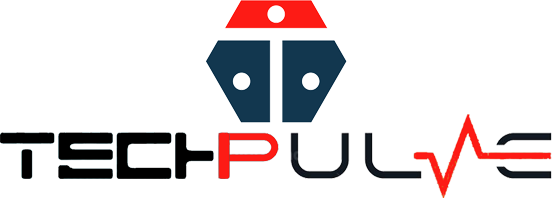In the rapidly evolving landscape of technology and data systems, qizdouyriz03 emerges as a fascinating term that demands exploration. Though it may sound cryptic, this concept combines innovation, design, and application across domains. In this article, we dive deeply into what qizdouyriz03 represents, how it is applied, its strengths and weaknesses, and what potential it holds for the near future.
What Is qizdouyriz03?
At its core, qizdouyriz03 refers to a modular framework (or identifier) used in advanced systems—whether in software, data labeling, or algorithmic models. It acts as a unique tag or structure enabling dynamic adaptation, configuration, and interoperability among components. While not a mainstream standard (yet), the idea of qizdouyriz03 is growing in specialized fields, especially where flexible system mapping is needed.
Origins and Evolution of qizdouyriz03
The conceptual roots of qizdouyriz03 can be traced back to modular identifier systems in computer science. Over time, engineers realized the need for a more adaptive, extensible schema. The “03” suffix suggests versioning, indicating iterative improvements. In many pilot projects, qizdouyriz03 is a successor to earlier prototypes like qizdouyriz01 or qizdouyriz02, incorporating feedback from testing phases, optimization routines, and scaling requirements.
Core Components of qizdouyriz03
Understanding qizdouyriz03 involves dissecting its building blocks:
-
Identifier schema: A structured tag format combining alphanumeric codes, metadata pointers, and checksum bits.
-
Interface adapters: Modules that allow the identifier to integrate with different subsystems (APIs, databases, messaging queues).
-
Mapping registry: A central or distributed service that keeps track of the relationships and states associated with each qizdouyriz03 unit.
-
Version control layer: Enables updates, rollbacks, and migration across versions while preserving compatibility.
These components together make qizdouyriz03 more than a mere code—it becomes an orchestrator in complex ecosystems.
How qizdouyriz03 Works
When you issue or generate a qizdouyriz03 token, the system attaches metadata (origin, timestamp, context). As it propagates through subsystems, adapters interpret and act upon it. The mapping registry ensures consistent state across modules. The version layer ensures if a subsystem only supports earlier versions, fallback mechanisms engage. The result: seamless flow and coordination.
Applications of qizdouyriz03
Data Integration
In modern environments where multiple data sources must be harmonized, qizdouyriz03 acts as a universal “glue tag.” As a result, by embedding context and rules within each tag, disparate systems can therefore understand, interpret, and ultimately correlate data more seamlessly, without requiring full-fledged translations.
Service Meshes and Microservices
Within microservices architectures, qizdouyriz 03 helps with routing, versioning, and tracing of requests across many services. It ensures traceability, isolation, and adaptive routing based on metadata.
IoT and Edge Devices
Since IoT systems often face fragmentation, embedding a qizdouyriz03 schema into device identifiers therefore enables edge networks to efficiently manage device states, handle version updates, and ultimately improve interoperability across diverse devices.
Machine Learning Pipelines
In ML and AI workflows, qizdouyriz03 can label data artifacts, feature sets, model versions, ensuring reproducibility and lineage tracking across training, evaluation, and deployment phases.
Benefits of Using qizdouyriz03
-
Flexibility: It can adapt across systems without rigid standard enforcement.
-
Compatibility: Versioning supports backward and forward integration.
-
Traceability: It embeds context, enabling full lifecycle tracking.
-
Scalability: Adaptable structure supports growth.
-
Resilience: Falls back gracefully if subsystems don’t support latest features.
Challenges and Risks with qizdouyriz03
-
Adoption barrier: It’s not yet widespread, so integration costs are high.
-
Complexity: The layered architecture adds overhead and potential points of failure.
-
Security concerns: Embedding metadata and context may be vulnerable if exposed.
-
Version conflicts: Ensuring versions don’t clash across modules is tricky.
-
Performance overhead: In high-throughput systems, extra layers may slow throughput unless optimized.
Designing a Successful qizdouyriz03 Strategy
To deploy qizdouyriz03 effectively, consider:
-
Gradual adoption — start in a small subsystem.
-
Clear version governance — define policies for upgrades and deprecation.
-
Security safeguards — encrypt or validate metadata.
-
Monitoring and logging — track tag flows, failures, mismatches.
-
Fallback paths — design degradations for systems that can’t understand certain versions.
This hybrid, staged approach mitigates risk while building trust in qizdouyriz03 across your architecture.
Realistic Use-Cases and Examples
In one pilot project, a logistics company used qizdouyriz03 to tag every shipment, linking it through database, IoT sensors, and delivery apps. Each subsystem interpreted metadata to update status, send notifications, or reroute. When new sensor types were added, the versioning aspect allowed legacy subsystems to ignore unknown fields safely.
In another project, a research lab used qizdouyriz 03 to label training data, feature extractors, model versions, and audit logs. The consistent identifier system made it easier to reproduce experiments months later.
Best Practices When Working With qizdouyriz03
-
Use concise metadata to avoid bloat.
-
Document every version change clearly.
-
Provide adapters or shims for subsystems unable to parse full metadata.
-
Test edge cases—unknown fields, version gaps.
-
Enforce checksums or signatures to avoid tampering.
Optimizing Performance Around qizdouyriz03
-
Cache common metadata translations.
-
Minimize string or JSON overhead—consider binary encoding.
-
Batch tag processing.
-
Use lightweight parsers in latency-sensitive paths.
-
Monitor latency impact and adjust architecture accordingly.
Security Considerations for qizdouyriz03
Since qizdouyriz03 carries context, version, and state, it can leak system internals if not protected. Best practices:
-
Sign or HMAC tags to prevent tampering.
-
Encrypt sensitive metadata segments.
-
Validate schema at subsystem boundaries.
-
Limit exposed metadata in public APIs.
-
Log and audit access and transformations.
Future Trends Around qizdouyriz03
As modular architectures and federated systems grow, qizdouyriz 03–style identifier frameworks are likely to gain traction. We may see:
-
Standardization efforts to formalize schemas.
-
Tooling, libraries, and platforms offering built-in support.
-
AI and ML models consuming qizdouyriz 03 metadata natively.
-
Cross-domain adoption—for example, combining IoT, data pipelines, and services with unified tags.
-
Advances in compression, encryption, and hybrid schemes to reduce overhead.
How to Start a qizdouyriz03 Pilot
-
Identify a domain (e.g. data pipeline, microservice subsystem).
-
Design a minimal tag schema with metadata you care about.
-
Create adapters in two or three modules.
-
Run in parallel with existing tagging for comparison.
-
Monitor performance, errors, conflicts.
-
Iterate schema, tests, fallback mechanisms.
-
Expand to more modules gradually.
Measuring Success of qizdouyriz03
Key metrics include:
-
Adoption rate: number of modules correctly using it.
-
Error rate: mismatches, unknown fields, version conflicts.
-
Latency overhead: extra time per request or operation.
-
Traceability gains: how often tag metadata helped solve issues.
-
Maintenance cost: how easy it is to evolve schemas.
Improvement in traceability and reduced integration friction are early indicators of success.
Common Mistakes When Implementing qizdouyriz03
-
Overdoing metadata—too many fields cause bloat.
-
Skipping versioning discipline—versions become chaotic.
-
Ignoring fallback for legacy systems.
-
Weak validation or security—leading to corrupt or malicious tags.
-
Insufficient testing across edge cases and system boundaries.
Avoiding these pitfalls ensures smoother deployment.
Community and Ecosystem
Though qizdouyriz03 is a niche concept, early adopters often share schemas, adapter modules, and patterns. Open source projects may host libraries for parsing or generating qizdouyriz 03 tags. Community forums or developer groups centered on modular architectures may increasingly reference it.
Integrating qizdouyriz03 into DevOps
In CI/CD pipelines, qizdouyriz03 tags can therefore be generated, validated, and parsed not only as part of build steps but also during deployment processes. Moreover, tag migration scripts, schema version checks, and backward compatibility tests should consequently be baked into DevOps workflows in order to maintain consistency and ensure that every release remains stable and reliable.
Case Study: Fictional Implementation
Imagine a smart city project uses qizdouyriz03 to integrate traffic sensors, public transport systems, environmental monitors, and user apps. Each subsystem interprets the tag metadata to optimize routing, send alerts, or adjust parameters. When a new sensor type arrives, its additional metadata is simply appended under version control, with older systems ignoring unfamiliar extensions. The city sees smoother operations, unified tracking, and easier expansion.
Interoperability with Other Identifier Systems
To coexist with UUIDs, URNs, or custom IDs, qizdouyriz03 adapters translate or wrap external IDs into its schema. Bridges allow systems to map back and forth. This ensures no system is forced to adopt wholesale; instead, gradual interoperability becomes possible.
Scaling qizdouyriz03 in Enterprise Environments
In large organizations:
-
Use distributed registries with sync protocols.
-
Partition schemas by domain to avoid name collisions.
-
Use key-value stores or graph databases for tag relationships.
-
Apply governance layers to approve schema changes.
-
Automate rollout and version deprecation.
The Role of qizdouyriz03 in Innovation
Because qizdouyriz 03 enables dynamic context, it encourages creative system design. Developers can experiment with metadata-driven behavior, adaptive routing, feature toggles, and hybrid systems—all centered around the tag.
Balancing Simplicity and Power
One tension is: how simple should qizdouyriz03 remain versus how rich? The sweet spot often lies in lean core schemas with optional extensions. Keep defaults minimal but allow growth. Document conventions so teams don’t diverge wildly.
Frequently Asked Questions
What is the full meaning of qizdouyriz03?
The exact expansion is usually contextual; typically, the “qizdouyriz” part is a coined name, and “03” signals version 3. The key is its role as a flexible identifier framework.
Is qizdouyriz03 already used in production systems?
A few pilot projects and research initiatives use qizdouyriz03–style systems, but wide adoption is still emerging.
Can qizdouyriz03 replace UUIDs or GUIDs?
It can complement or wrap them, adding metadata and versioning. But replacing them entirely requires careful migration planning.
How much does qizdouyriz03 slow down performance?
Overhead depends on implementation. With binary encoding, caching, and lightweight parsing, it can be minimal—often measurable in microseconds.
Is qizdouyriz03 secure by default?
No. You must incorporate encryption, signing, validation, and access controls to safeguard metadata and prevent tampering.
What kinds of systems benefit most from qizdouyriz03?
Whether in distributed architectures, microservices, IoT platforms, or even data pipelines, as well as in any environment requiring traceable and mutable identifiers across modules, qizdouyriz 03 proves to be highly beneficial.
Conclusion
qizdouyriz03 is not just a label—it’s a philosophy for designing identifiers that are dynamic, versioned, and context-rich. Its power lies in bridging modular systems, enabling traceability, and adapting over time. Although adoption presents challenges in complexity, performance, and strategy, with careful planning it can transform how your system—or organization—manages identities and flows. As technology evolves, the concepts behind qizdouyriz-03 may well become cornerstones in architecture design.

